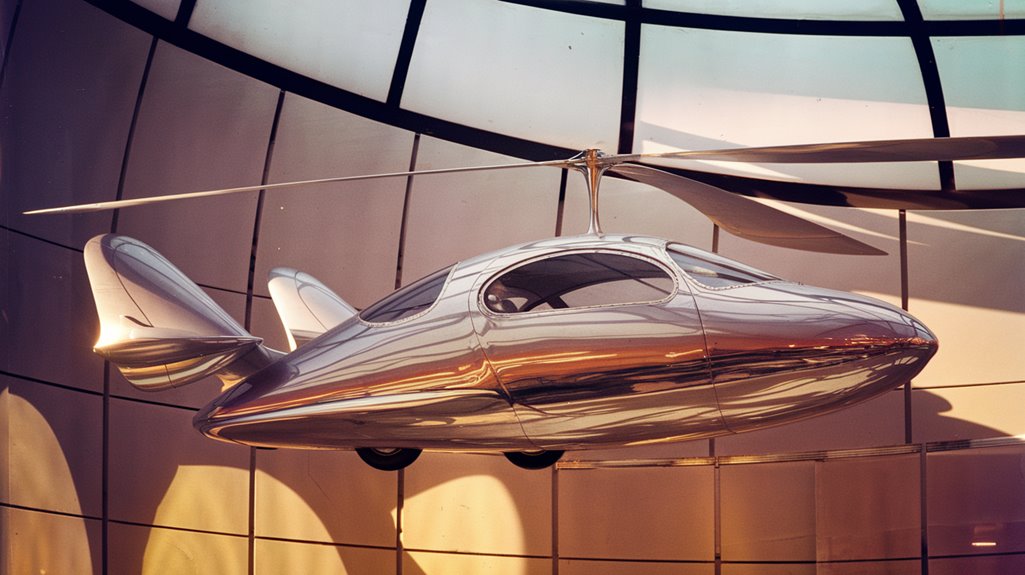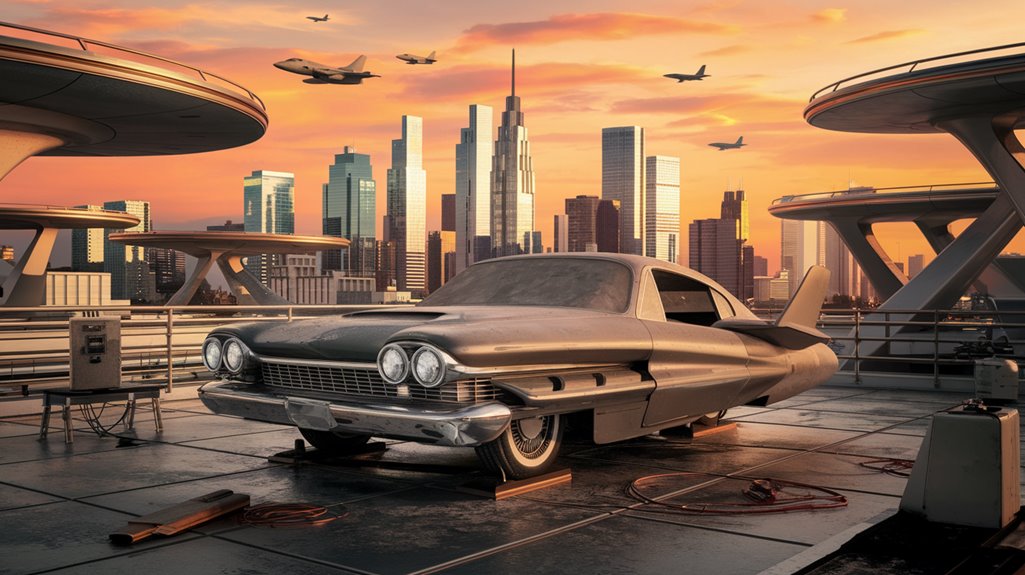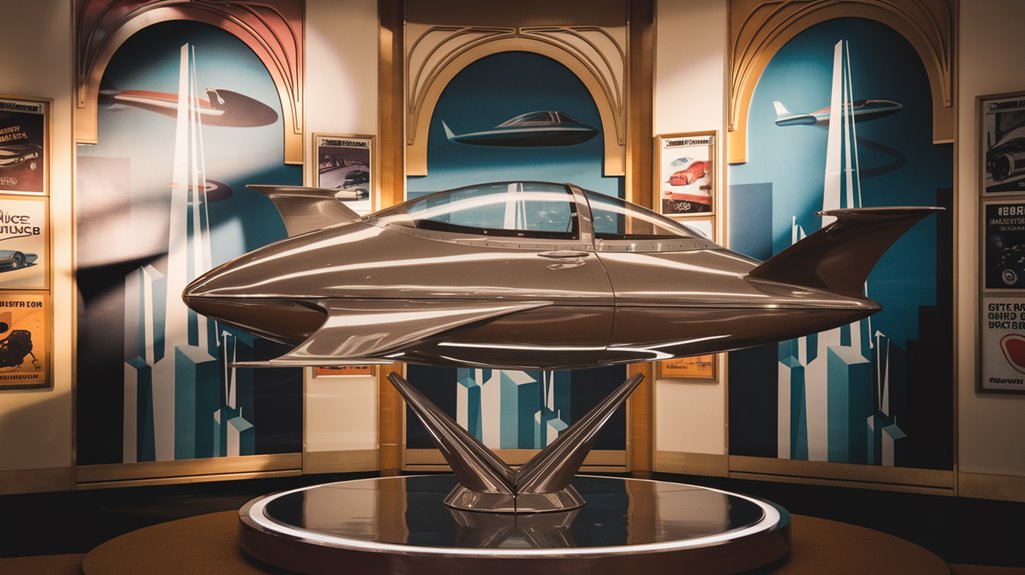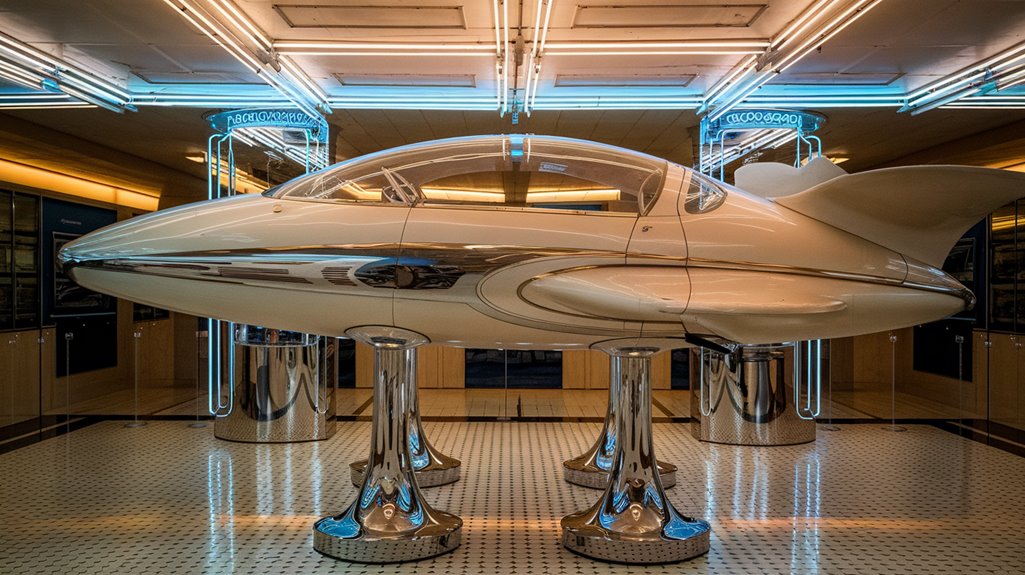1950s Fantasies: Where Did Our Flying Cars Go?
You've probably seen those retro illustrations of families zipping through the clouds in their sleek flying automobiles, a promise of tomorrow that never quite arrived. The 1950s offered a tantalizing glimpse of this airborne future, complete with working prototypes and passionate innovators who swore we'd all be skybound by the year 2000. Yet here you are, stuck in traffic on your morning commute. What happened to those ambitious dreams, and why did this particular vision of the future remain stubbornly grounded?
The Golden Age of Flying Car Dreams

While today's tech entrepreneurs race to develop flying cars, the true golden age of these fantastical vehicles peaked in the 1950s. You would've witnessed remarkable flying car technology breakthroughs during this era, from Charles Lindbergh testing the Fulton FA-2 Airphibian to Molt Taylor's successful Aerocar flights.
The Aerocar reached speeds of 177 kilometers per hour during its groundbreaking December 1949 flight.
These pioneers weren't just dreaming – they were actively pushing the boundaries of futuristic transportation. The ConvAirCar crashed during a critical test flight, highlighting the dangers of early development.
Yet beneath the optimism lurked serious challenges. You'd have seen the tragic accidents, like Henry Smolinski's fatal crash and Leland Bryan's deadly test flight.
Despite these setbacks, the 1950s marked an unprecedented period of innovation that shaped our vision of tomorrow's mobility. The decade's achievements continue to influence modern flying car development, even as we grapple with the same core challenges of safety and regulation.
Early Pioneers and Their Ambitious Prototypes
The roots of flying car innovation stretch far beyond the 1950s, reaching back to Leonardo da Vinci's imaginative "Aerial Screw" design in the 15th century.
Jules Verne's captivating works featuring multi-terrain vehicles helped popularize the concept of flying transportation in the public consciousness.
You'll find pioneering designs scattered throughout history, from Glenn Curtiss's 1920s Autoplane to Waldo Waterman's remarkable Arrowbile in 1934.
Modern startups like Alef and Doroni have recently received FAA airworthiness approval, marking significant progress in the industry.
These ambitious visions faced numerous challenges, but three notable prototypes stand out:
- Robert Fulton's Airphibian (1946) – the first flying car certified by aviation authorities
- The ConvAirCar (1940s) – a revolutionary two-door sedan with detachable wings
- The AVE Mizar (1973) – a bold fusion of a Ford Pinto and Cessna Skymaster
While many of these early attempts ended in setbacks, their legacy lives on in today's 400+ flying car startups, each building upon the foundations laid by these innovative pioneers.
Why the 1950s Vision Never Took Off
Despite widespread enthusiasm for flying cars in the 1950s, a perfect storm of economic, technological, and infrastructural challenges grounded these ambitious dreams.
You might wonder why these futuristic vehicles never materialized. The harsh reality was that technological limitations of the era made it nearly impossible to create safe, practical flying cars for mass production. Even successful pioneers like Molt Taylor spent seven years certifying their flying car designs. Small personal aircraft like the Jetson 1 exemplified these ambitious but limited attempts at flying vehicles.
Public perception shifted as the interstate highway system expanded, making traditional automobiles more practical. The complexity of building necessary infrastructure, while still developing basic road networks, proved overwhelming.
Major setbacks like the Great Depression, World War II, and fatal accidents dampened enthusiasm for these projects.
Modern Takes on the Flying Car Promise
Modern flying car development has surged beyond 1950s imagination, with companies like Lilium, AeroMobil, and Terrafugia leading breakthrough innovations in electric propulsion and autonomous flight systems.
These technological advancements are reshaping urban mobility through sophisticated AI, improved battery performance, and eco-friendly designs. Industry experts project the market to reach over $1.5 trillion by 2040. Companies like Joby Aviation are demonstrating the viability of zero-emission travel within metropolitan areas.
You'll find today's flying car solutions far more practical than their retro counterparts, focusing on:
- Electric vertical takeoff and landing (eVTOL) capabilities for seamless city integration
- Advanced AI systems for autonomous navigation and safety
- Hybrid-electric propulsion systems that reduce noise and environmental impact
While current models like Alef Aeronautics' $300,000 vehicle remain expensive, ride-sharing services could make flying transportation more accessible.
With companies pursuing FAA and EASA certifications, you're closer than ever to seeing these vehicles in action.
The Road Ahead: Challenges and Opportunities

While revolutionary advances in flying car technology continue to emerge, significant hurdles stand between today's prototypes and widespread adoption.
You'll find that regulatory hurdles pose some of the biggest challenges, as detailed frameworks for safety and air traffic control don't yet exist. The current technological advancements can't fully overcome limitations in battery life and autonomous systems reliability. The industry requires rigorous safety standards for vehicle design and maintenance.
You're looking at vehicles that cost between $120,000 and $3.5 million, making them inaccessible to most consumers. The recent announcement from Alef Aeronautics suggests a more attainable price point of $300,000 for their models.
Beyond the price tag, you'll need extensive infrastructure investments in landing pads, charging stations, and maintenance facilities.
Environmental concerns about noise pollution and privacy issues also need addressing.
For flying cars to become reality, we'll need to solve these technical, economic, and social challenges while maintaining rigorous safety standards.










